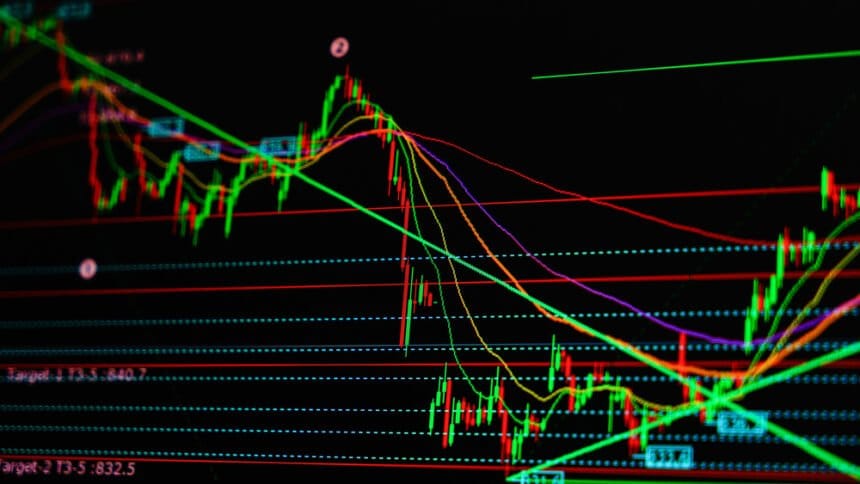Big data technology has undoubtedly changed the financial industry in extraordinary ways. It will play an even more important role in the future.
We usually talk about the benefits of big data from the perspective of financial institutions such as hedge fund managers, insurance companies and banks. These companies have certainly benefited from big data, which explains why global financial companies spent $10.8 billion on financial analytics last year. However, big data can also be very beneficial for regular people trying to make better personal financial decisions.
Hazel Pan wrote an article for TechDay talking about how big data has helped with financial trading. Pan points out that big data has helped make trades more efficient and given traders the ability to take advantage of real-time trading opportunities.
When it comes to predicting future price movements in the market, technical analysis emerges as the most powerful weapon at our disposal. Technical analysis is a calculated science based on historical and real data, not some hocus-pocus or game of chance. By studying past market data, particularly price and volume, we gain valuable insights into the future direction of prices.
Within the expansive realm of technical analysis, a plethora of tools and techniques awaits us to enhance our understanding of the charts. Charts, indicators, and oscillators are just a few of the many tools available. As we pointed out in a previous article, you can even use data analytics to provide better Fibonacci retracements. What sets these tools apart is their ability to be combined, creating a potent concoction that solidifies our grasp on the current market situation. By utilizing these techniques, we can formulate a more certain opinion that guides our decision-making.
Opponents may argue that technical analysis is merely a fancy way to gaze into a crystal ball, disconnected from the realities of the market. However, we must remind these skeptics that technical analysis is firmly rooted in the tangible realities of the market. It is not based on unfounded claims or baseless assumptions. This methodology is grounded in concrete, empirical evidence that has been tested and proven over time.
To further validate the power and effectiveness of technical analysis, we need look no further than the achievements of those who have mastered this approach. Successful traders and institutional investors recognize the significance of technical analysis and utilize it as a key tool in their strategies. They understand that the quality and quantity of data at their disposal are essential for gaining an edge in the market.
The New Era: How Big Data Changed Technical Analysis
In the not-so-distant past, the world of technical analysis was confined to the limits of smaller datasets and limited processing power. We could only catch a glimpse of market trends, relying on fragmented information to make our trading decisions. However, with the advent of Big Data and the emergence of powerful frameworks for processing it, a new era has dawned upon us.
Now, armed with the might of Big Data, we possess an unprecedented understanding of what truly transpires in the markets. As The Economist eloquently puts it, the impact of this shift is such that people almost do not trade stocks anymore. The utilization of massive datasets, coupled with advanced processing capabilities and artificial intelligence has transformed the landscape of trading, rendering traditional methods obsolete. For example, due to computerization and algorithmic trading, Goldman Sachs decreased the number of people trading stocks from 600 to 2, from 2000 to 2016.
The law of big numbers reinforces the reliability and accuracy of our analyses. By analyzing vast amounts of data, we unveil patterns and correlations that were previously hidden. Emotions, one of the biggest pitfalls of a trader, are eradicated as algorithmic trading takes the stage. With the assistance of machines, biases and impulsive decisions are eliminated, allowing logic and objectivity to guide our actions.
The power of Big Data also allows us to venture into uncharted territories and explore techniques previously unthinkable. By combining multiple data feeds with almost live-execution, we have the ability to engage in strategies and experiments that were once beyond our reach. For example if you like to trade Wheat, you could enhance your candlestick patterns analysis by also leveraging live-weather and crop data to have even more reliable insight. It is an era of discovery and innovation, where we can push the boundaries of our understanding and unlock new avenues of profit.
Uncovering Hidden Patterns with Big Data: A Real World Case Study
In the realm of algorithmic trading, hedge funds like Renaissance Technologies blazed the trail as pioneers in implementing Big Data analysis. With the crème de la crème of mathematicians and quants on their teams, they achieved unprecedented returns, some even daring to claim that they had unlocked the secrets of the financial markets itself. Now, a new player has emerged on the scene, grabbing attention and pushing the boundaries of what is possible with Big Data: Numerai.
Numerai, with one of the founders of Renaissance Technologies as an investor, has taken the concept of Big Data utilization in trading to new heights. Their approach is unique and intriguing. Instead of relying on traditional sources of market data, Numerai taps into a vast array of data sets that, when viewed in isolation, may seem devoid of meaning. However, with the power of Big Data, hidden patterns and insights are uncovered, transforming these seemingly unrelated data sets into highly reliable predictors of market behavior.
At the core of Numerai’s approach lies a unique framework. They offer a data science tournament that they proudly proclaim to be “the hardest in the world.” Traders, armed with their expertise in data analysis, compete in this tournament to develop models and algorithms that can generate profitable trading strategies. The twist? The competition is conducted on encrypted and anonymized data, preventing the participants from gaining any form of insider information or bias.
The brilliance of Numerai lies in its ability to leverage the collective intelligence of its global network of traders. Through a process called “staking,” participants submit predictions on encrypted data sets, the combination of which, when decrypted, forms the foundation for their trading decisions. The decentralized nature of Numerai’s approach allows for a diverse range of strategies and perspectives, ensuring a robust and unbiased selection of winning models.
By harnessing the power of the masses and the unmatched scale of Big Data, Numerai has created a platform that challenges conventional wisdom. It introduces complexity and depth to the realm of algorithmic trading, paving the way for innovation and breakthroughs. While many may be intimidated by the challenges they present, the rewards of participating in Numerai’s tournament are undeniable – not only in the pursuit of profits but also in the advancement of our understanding of the true potential of Big Data in financial markets.
Conclusion
In conclusion, the rise of Big Data in the realm of technical analysis has brought about a paradigm shift in trading. From the historical and real data that drives our predictions to the utilization of massive datasets and advanced processing frameworks, we now possess unprecedented knowledge and tools to navigate the market. The achievements of hedge funds like Renaissance Technologies and the innovative approach of platforms like Numerai exemplify the power of Big Data in shaping the future of trading.











